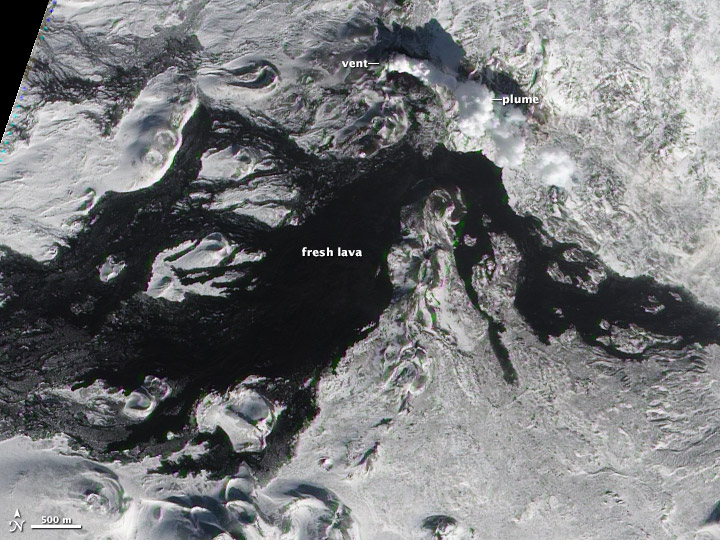Photo: Russian Volcano Carves Lava River


Fresh lava flows down Tolbachik volcano in Russia's Kamchatka peninsula in a new space snapshot from NASA's Earth Observing-1 (EO-1) satellite.
The fiery volcano erupted on Nov. 27, 2012, pouring fast-moving basalt lava through snow and ice on its steep flanks. A near-permanent ash plume rose from Tolbachik, visible in the March 6 satellite image.
The volcanic edifice records a complex geologic history. The western half of Tolbachik is a steep-sided stratovolcano, like Mount Rainier and Mount St. Helens in Washington, according to NASA's Earth Observatory. The eastern half is a broad, flat shield volcano, like Hawaii's Kilauea volcano, with nested calderas at the summit. Calderas are bowl-shaped depressions left behind when a volcano violently explodes, emptying its magma chamber.
With more than 300 volcanoes crowded into a California-size peninsula, Russia's Kamchatka is home to the world's highest concentration of active volcanoes. Only 29 are currently active, according to the Smithsonian Institution's Global Volcanism Program.
Email Becky Oskin or follow her @beckyoskin. Follow us @OAPlanet, Facebook or Google+. Original article on LiveScience's OurAmazingPlanet.
Get the world’s most fascinating discoveries delivered straight to your inbox.



